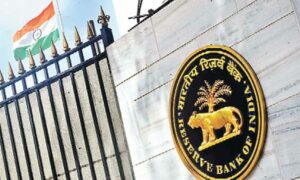VisionIAS
17:38

1) Autistic Pride Day: 18 June

•Autistic Pride Day is being observed on 18th June every year. Autistic pride recognizes the importance of pride for autistics and understands it not as a disease but as a difference. Autistic Pride Day was initiated by Aspies For Freedom, a group that raises public awareness about autism rights.
2) Sustainable Gastronomy Day: 18 June

•Sustainable Gastronomy Day is celebrated around the world on 18th June. It emphasizes the need to focus the world’s attention on the role that sustainable gastronomy can play.
3) World Food India to be held in November 2019

•The tagline of the event will be “Forging Partnerships for Growth”.
•WFI 2019 to be the biggest gathering of global and domestic stakeholders in Food processing sector.
4) Lt General Faiz Hameed Appointed Pakistan ISI Chief

•Pakistan has appointed Lieutenant General Faiz Hameed as the new Director General of the Inter-Services Intelligence (ISI). He was previously serving as the head of the Counter Intelligence wing in the ISI. Lieutenant General Faiz Hameed replaces Lieutenant Gen Asim Munir, who was appointed to head the ISI only eight months ago.
5) Facebook launches cryptocurrency “Libra”

•Libra is being touted as a means to connect people who do not have access to traditional banking platforms. Technology to make transactions with Libra will be available as a standalone app – as well as on WhatsApp and Facebook Messenger platforms – as early as 2020.
6) “Amazon India” best place to work in the country

•Microsoft India emerged as the runner-up, followed by Sony India. Mercedes-Benz, IBM, Larsen & Toubro, Nestle, Infosys, Samsung and Dell are others among the country’s top 10 most attractive employers.
•As per the study, salary and employee benefits continue to be the top driver, while choosing an employer for the Indian workforce, followed by work-life balance and job security.
7) Fitch cuts India growth forecast to 6.6% for 2019-20 fiscal

•Fitch also retained its GDP growth forecast for the next fiscal (2020-21) at 7.1% and 7.0% for 2021-22.
8) RBI gets a new executive director

•Dr. Rabi N. Mishra has been elevated from principal chief general manager to Executive Director in the Reserve Bank of India. Mishra’s portfolio now includes non-banking and Co-op bank supervision as well as the College of Supervisors. Current strength of Executive directors in RBI is 12.
9) Gary Woodland won the 119th US Open

•Gary Woodland won the 119th US Open, capturing his first Major title after defeating two-time defending champion Brook Koepka.








